Selection of our Projects
We have compiled a selection of projects from our subject areas of reactor safety, decommissioning and dismantling, storage, disposal, safety, radiation protection and environment and energy, so that you can get an idea of what our work as a research and expert organisation looks like in concrete terms.
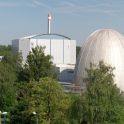
Research reactors differ considerably in design and use from commercial reactors in nuclear power plants. GRS researchers are looking at how these differences affect the safety of research reactors.
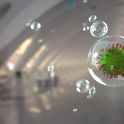
In the current Covid 19 pandemic, airborne aerosols that contain viruses are considered to be an important transmission route, especially in insufficiently ventilated rooms. To be able to make a sound assessment of the related risk of infection and to derive appropriate recommendations for action, the aerosol behaviour as well as representative ambient conditions must be considered in detail and realistically. Within the framework of the AeroCoV research project, scientists of GRS have applied the COCOSYS simulation code – which was developed and validated for the analysis of accidents and severe accidents in containments of nuclear power plants – for the first time for calculating the dispersion of SARS-CoV-2 aerosols.

Claystone, salt rock or granite – it is in one of these three host rocks that a repository for high-level radioactive waste is to be constructed in Germany. This is where the waste is to be safely contained for one million years. In a current project carried out in GRS's geoscientific laboratory, research is being conducted into how the properties of claystone formations are changed by the waste emplaced.
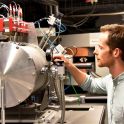
The mineral graphite is used in some types of reactors and can be activated by neutron radiation, i.e. converted into radioactive isotopes. In order to select a suitable disposal option, the graphite must be thoroughly examined radiologically. However, many measuring methods are relatively costly and in turn produce new radioactive waste themselves. A team of researchers from GRS and the University of Cologne is therefore developing a method with which reactor graphite can be characterised quickly and reliably.
In a repository, geotechnical barriers contribute to the safe and long-term isolation of radioactive waste in the deep underground. The "sandwich" sealing system with its alternating sequence of sealing and filter segments is currently being tested as a geotechnical barrier in a large-scale experiment. GRS has assumed the technical leadership of the project at the international Mont Terri rock laboratory.
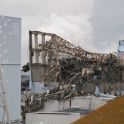
Coordinated by the Nuclear Energy Agency of the Organisation for Economic Co-operation and Development (OECD/NEA), a new international research project has been launched to examine further the accident sequences at Fukushima Daiichi. Together with 21 institutions from 11 countries, Germany - represented by GRS - will also participate in the project "Analysis of Information from Reactor Buildings and Containment Vessels of Fukushima Daiichi NPS" (ARC-F). The three-year project is led by the Japan Atomic Energy Agency (JAEA).
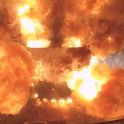
GRS is currently conducting research in the HEAF projectof the Committee on the Safety of Nuclear Installations (CSNI) on the subject of fire protection in nuclear installations. The CSNI is an international body of the Nuclear Energy Agency (NEA) of the Organisation for Economic Cooperation and Development (OECD). It coordinates all NEA projects dealing with the safety of nuclear installations.

In the research project ANSICHT, the concept of a method for the safety case of a German repository for high-level radioactive waste in argillaceous (clay) rock was developed in 2014 with the help of generic geological site models and taking into account the legal requirements. However, this could not yet be fully tested at the time. Therefore, in the follow-up project ANSICHT-II, which has now been completed, calculations for long-term safety analyses were carried out to test the safe containment of radionuclides in the containment-providing rock zone (CRZ) in the clay rock for the two repository site models investigated in ANSICHT.
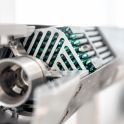
GRS scientists have dealt with this issue as part of a research project which not only comprised investigations regarding storage casks but also studies of fuel assembly behaviour.
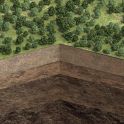
Germany is searching for a site for a repository for high-level radioactive waste. According to the Site Selection Act, the site with the best-possible safety is be found by means of a comparative procedure. But how can the requirements of the law be transformed into concrete scientific requirements? Together with other institutions, GRS researchers now present a first approach.